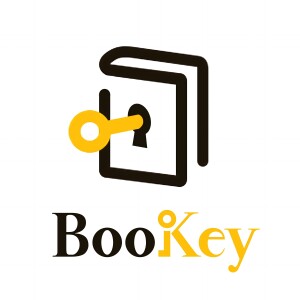
"Crucial Conversations: Tools for Talking When Stakes Are High" is a widely acclaimed book co-authored by Kerry Patterson, Joseph Grenny, Ron McMillan, and Al Switzler. First published in 2002, this book delves into the dynamics of high-stakes conversations, how they can influence significant outcomes across various aspects of life and offers practical methods for navigating them effectively.
Authors' Background
- Kerry Patterson - A prolific writer and experienced trainer, Kerry has a strong background in developing corporate training programs. His expertise lies in various organizational training and performance fields.
- Joseph Grenny - Renowned as a social scientist for business performance, Joseph has led major impacts in corporate and social sectors. His work focuses particularly on performance improvement and organizational behavior.
- Ron McMillan - With a rich career in the corporate training world, Ron has helped many organizations improve their communications strategies, leadership, and team building.
- Al Switzler - Known for his strategic communication seminars and trainings, Al has a comprehensive background in management, especially in healthcare settings.
Book's Context and Themes
The book addresses a common challenge many face: how to handle important conversations where opinions vary greatly, and the emotions and stakes are high. Often these conversations, when handled poorly, can lead to devastating consequences, impacting relationships, work environments, and personal well-being.
Crucial Conversations offers insights into:
- Recognizing Crucial Conversations: Identifying the signs of a crucial conversation, like physical discomfort or emotional stress, which signal that high stakes are in play.
- Preparing for High-stakes Situations: Frameworks to prepare mentally and substantively for important interactions.
- Handling Conversations Tactfully: Techniques like mirroring emotions, redirecting focus, and creating safe spaces where all parties feel heard and valued.
- Achieving Desired Outcomes: Ensuring that crucial conversations lead to positive results without damaging relationships.
Relevance to Professionals and Personal Growth
The usefulness of the strategies taught in Crucial Conversations extends well beyond the workplace, touching on relationships in personal life, community engagement, and everyday interactions. Readers learn to approach these discussions without resorting to silence or violence, instead fostering open, healthy dialogue.
The book has been employed in corporate training sessions, leadership seminars, and educational workshops globally, suggesting its broad applicability and effectiveness in fostering healthier communication strategies across various spheres of life.
Conclusion
Crucial Conversations is not just about talking effectively; it's about fostering relationships that can withstand the pressures of misunderstandings, complex emotions, and critical stakes. It is recommended reading for anyone looking to improve their communication skills in both their personal and professional lives, underscoring the importance of dialogue in achieving understanding and collaboration. The interdisciplinary backgrounds of the authors enrich the book, making it a practical, insightful, and transformative guide.
Chapter 2 Analysis of Main Content"Crucial Conversations" by Kerry Patterson, along with co-authors Joseph Grenny, Ron McMillan, and Al Switzler, equips readers with tools for handling high-stakes discussions with techniques and theories grounded in decades of research. Here are three key approaches from the book:
- Dialogue Technique: This core technique focuses on fostering open dialogue. The authors assert that the free flow of relevant information is crucial in high-stakes conversations. They teach the reader how to create a safe environment where everyone feels comfortable expressing themselves, even amid disagreement or strong emotions. This involves skills like listening, sharing controversial or vulnerable views without causing defensiveness, and encouraging others to do the same.
- Mutual Purpose and Mutual Respect: The concept of establishing "Mutual Purpose" involves ensuring that all parties in the conversation share a common goal in the discussion, which helps in aligning the participants towards a shared outcome. "Mutual Respect," on the other hand, involves maintaining an environment where all parties respect each other throughout the conversation. These foundational principles are crucial for keeping conversations constructive and preventing them from devolving into conflict.
- MASTER my stories: This analytical tool involves self-reflection and understanding one's internal narratives. The authors guide readers to analyze their own stories and emotions to understand how these internal scripts can drive reactive behaviors in crucial conversations. By mastering these stories, individuals can respond more thoughtfully and effectively, rather than being led by emotional responses. This self-analysis promotes greater self-awareness and emotional intelligence in communications.
Each of these techniques and theories is designed to enhance understanding and outcomes in crucial conversations, turning them into opportunities for productive dialogue rather than conflict.
Chapter 3 Theme Exploration and Analysis"Crucial Conversations: Tools for Talking When Stakes Are High" by Kerry Patterson, Joseph Grenny, Ron McMillan, and Al Switzler explores effective communication strategies that are crucial in high-stakes discussions. The book provides insight and tools on how to handle disagreements and high-stakes communication in a way that avoids descending into destructive arguments. Instead, it aims to produce constructive dialogues that respect all participants' opinions and lead to beneficial outcomes. Here are some specific themes and topics explored within the book:
- Defining Crucial Conversations: The authors describe crucial conversations as discussions between two or more people where the stakes are high, opinions vary, and emotions run strong. Recognizing when a conversation turns crucial is foundational to applying the techniques discussed in the book.
- Start with Heart: One of the core principles in the book involves focusing on what you really want from the conversation. This means staying focused on the end goal and not getting sidetracked by emotional responses or irrelevant issues.
- Learn to Look: This theme focuses on becoming aware of what’s happening in the moment during the conversation. It involves paying attention to the flow of dialogue and noticing when it becomes contentious or when people start to withdraw.
- Make It Safe: A significant portion of the book discusses how to ensure that all participants in a conversation feel safe enough to contribute their thoughts and opinions. This involves creating a mutual respect and mutual purpose environment to prevent others from moving into either silence or violence.
- Master My Stories: This theme is about controlling one’s own reactions. It explores how to stay in control of your emotions and reactions by reinterpreting your own stories or assumptions. This section teaches how to avoid jumping to conclusions or being governed by unchecked emotions.
- STATE My Path: This acronym stands for Share your facts, Tell your story, Ask for others' paths, Talk tentatively, and Encourage testing. The authors delineate a technique for expressing your views in a way that is both direct and respectful, encouraging open dialogue.
- Explore Others' Paths: This involves actively listening to and understanding the other person's point of view. It means being genuinely open to other perspectives and asking questions to enrich understanding.
- Move to Action: Here, the focus is on turning the dialogue into decisions and actions. This involves determining how decisions will be made, who will make them, and how follow-up will occur.
- Putting It All Together: The book concludes with advice on integrating the skills into everyday interactions and making them a natural part of handling crucial conversations. This includes continual practice and reflection.
Overall, "Crucial Conversations" not only provides tools and techniques for handling difficult dialogues but also encourages developing a mindset of growth, openness, and persistent dialogue. It's aimed at improving personal and professional relationships by transforming the way individuals handle crucial conversations.
Book https://www.bookey.app/book/crucial-conversations
Quotes https://www.bookey.app/quote-book/crucial-conversations
YouTube https://www.youtube.com/watch?v=NvCme79olCw
Amazom https://www.amazon.com/-/zh/dp/B09MV3818X
Goodreads https://www.goodreads.com/book/show/15014.Crucial_Conversations?from_search=true&from_srp=true&qid=u6Efj8B3Up&rank=1
More Episodes
 2024-11-18
2024-11-18
 13
13
 2024-11-16
2024-11-16
 6
6
 2024-11-08
2024-11-08
 13
13
 2024-11-08
2024-11-08
 14
14
 2024-10-17
2024-10-17
 16
16
 2024-09-12
2024-09-12
 38
38
 2024-09-11
2024-09-11
 22
22
Create your
podcast in
minutes
- Full-featured podcast site
- Unlimited storage and bandwidth
- Comprehensive podcast stats
- Distribute to Apple Podcasts, Spotify, and more
- Make money with your podcast
It is Free
- Privacy Policy
- Cookie Policy
- Terms of Use
- Consent Preferences
- Copyright © 2015-2024 Podbean.com






